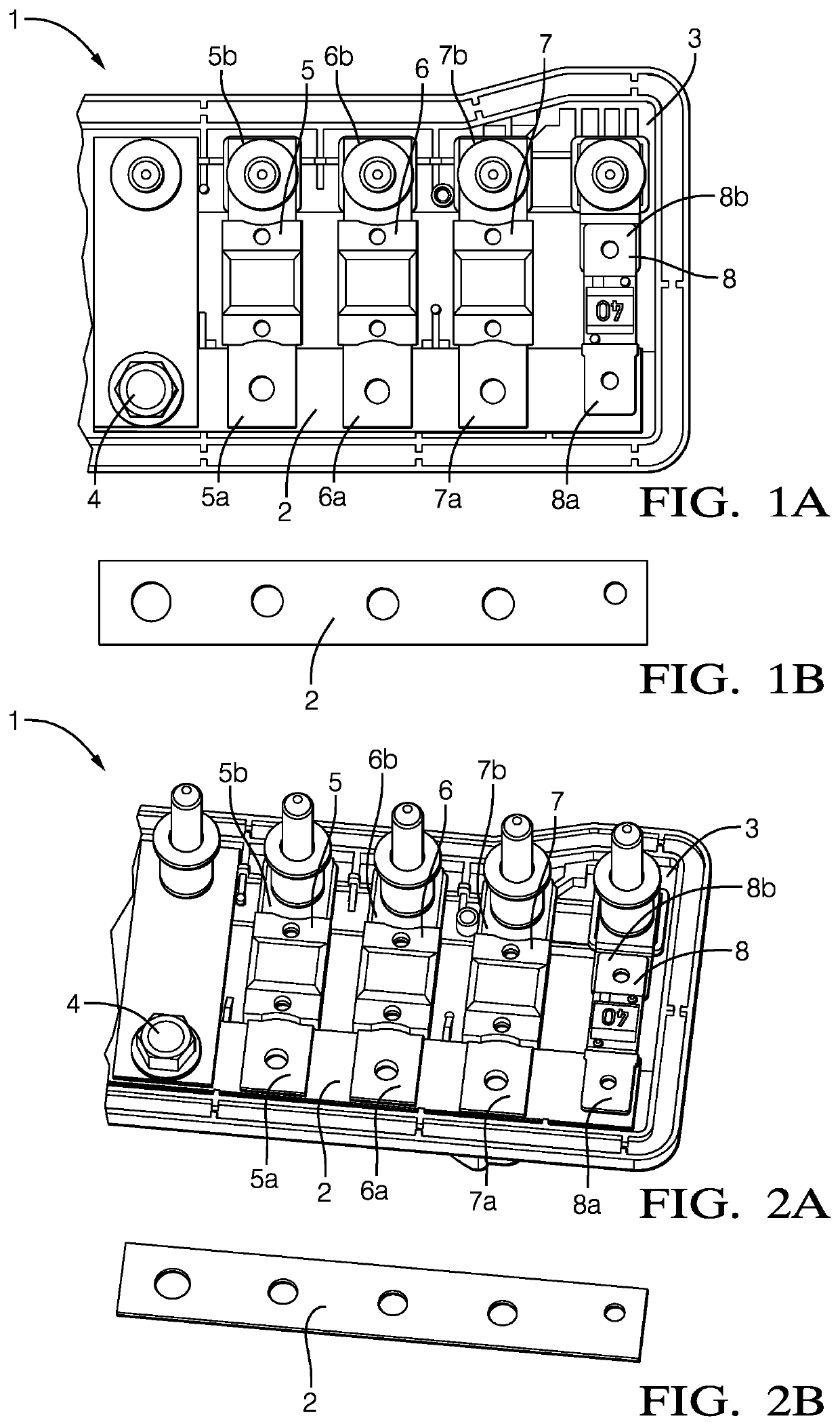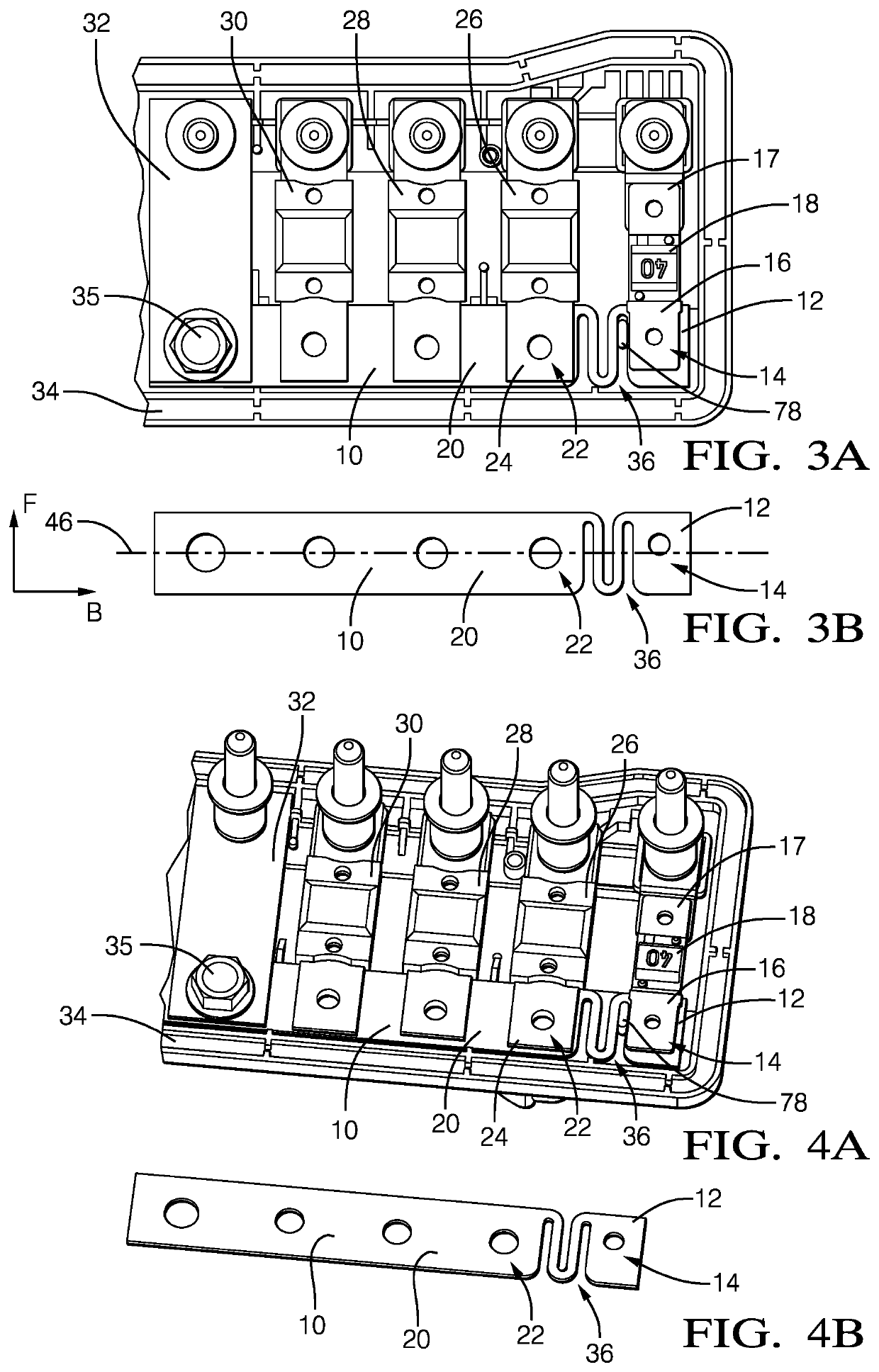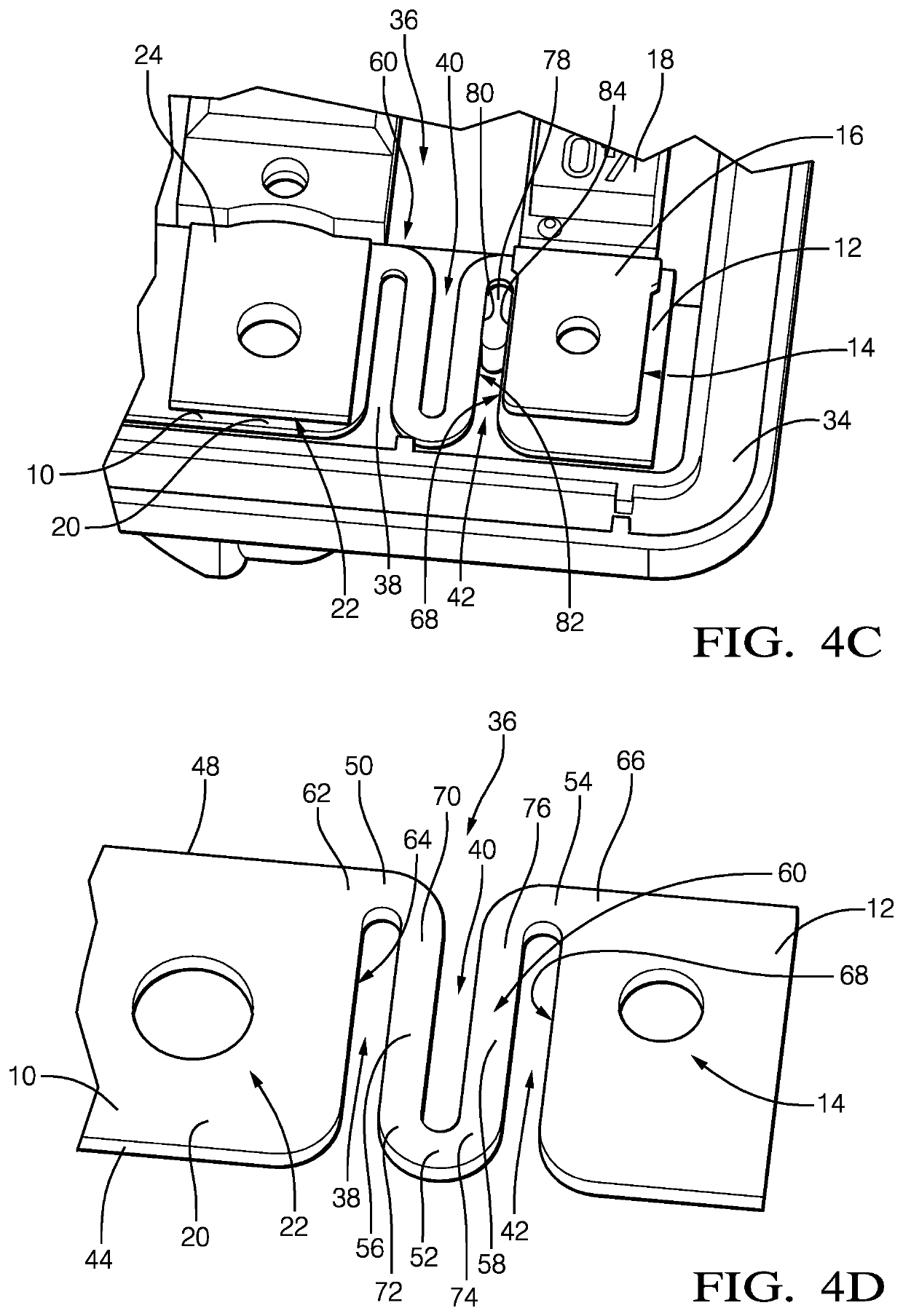Bus bar
- Summary
- Abstract
- Description
- Claims
- Application Information
AI Technical Summary
Benefits of technology
Problems solved by technology
Method used
Image
Examples
first embodiment
[0064]In FIGS. 3A to 4D, a straight bus bar 10 according to the invention is shown. The bus bar 10 comprises a rigid first portion 12 with a first contact surface 14 that is connected to a first end 16 of a first fuse 18 (FIGS. 3A and 4A) and a rigid second portion 20 with a second contact surface 22 that is connected to a first end 24 of a second fuse 26. A third fuse 28, fourth fuse 30 and fifth fuse 32 are also connected to the bus bar 10 at their respective first ends.
[0065]The bus bar 10 is mechanically connected to a housing 34 via a screw 35. The housing 34 is made of a non-conductive material with a higher thermal expansion coefficient than the material of the bus bar 10, e.g. plastic. Thus, when the housing 34 and the bus bar 10 warm up due to a temperature rise around the bus bar 10 and the housing 34, they both expand in an axial direction i.e. the main direction B of the bus bar (FIG. 3B), and a lateral direction, i.e. the main direction F of the fuses. However, the bus ...
second embodiment
[0070]FIG. 5A to 5C depict a bus bar 110 according to the invention. The bus bar 110 has a rigid first portion 112 and a rigid second portion 120 which are connected to each other by a resilient compensation portion 136. The resilient compensation portion comprises a first lateral recess 138 extending from a first side surface 144 into the bus bar 110 further than a centerline 146 until only a first web portion 150 remains at an end of the lateral recess 138. The resilient compensation portion also comprises a second lateral recess 140 extending from a second side surface 148 parallel to the first lateral recess 138 further than the centerline 146 until only a second web portion 152 remains at the end of the lateral recess 140.
[0071]The lateral recesses 138 and 140 are spaced from each other in an axial direction so that a lateral web portion 156 is formed between the first lateral recess 138 and the second lateral recess 140. The lateral web portion 156 has a similar width than the...
third embodiment
[0074]FIG. 6A to 6C depict a bus bar 210 according to the invention. The bus bar 210 has a rigid first portion 212 and a rigid second portion 220 which are connected to each other by a resilient compensation portion 236.
[0075]The resilient compensation portion 236 comprises four lateral recesses, a first lateral recess 238, a second lateral recess 240, a third lateral recess 242 and a fourth lateral recess 243. The first lateral recess 238 extends from a first side surface 244 into the bus bar 210 shorter than to a centerline 246. The second lateral recess 240 extends from a second side surface 248 in the direction of the first lateral recess 238 towards the first lateral recess 238 into the bus bar 210 shorter than to the centerline 246. The first lateral recess 238 and the second lateral recess 240 form a first web portion 250 that remains at the centerline 246 between the first lateral recess 238 and the second lateral recess 240 in a lateral direction. The first lateral recess 2...
PUM
 Login to View More
Login to View More Abstract
Description
Claims
Application Information
 Login to View More
Login to View More - R&D
- Intellectual Property
- Life Sciences
- Materials
- Tech Scout
- Unparalleled Data Quality
- Higher Quality Content
- 60% Fewer Hallucinations
Browse by: Latest US Patents, China's latest patents, Technical Efficacy Thesaurus, Application Domain, Technology Topic, Popular Technical Reports.
© 2025 PatSnap. All rights reserved.Legal|Privacy policy|Modern Slavery Act Transparency Statement|Sitemap|About US| Contact US: help@patsnap.com



